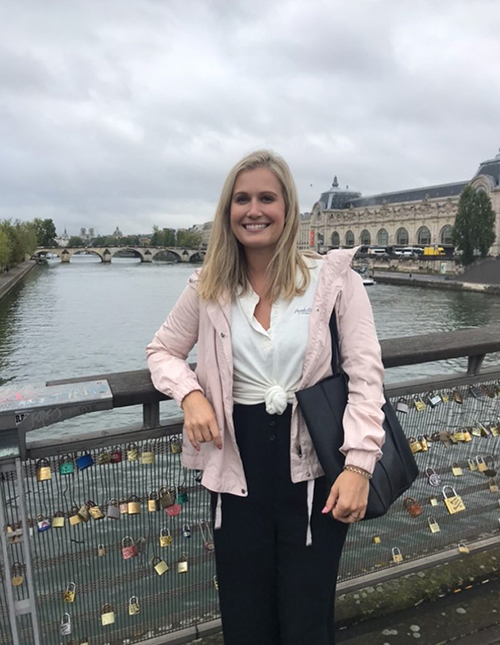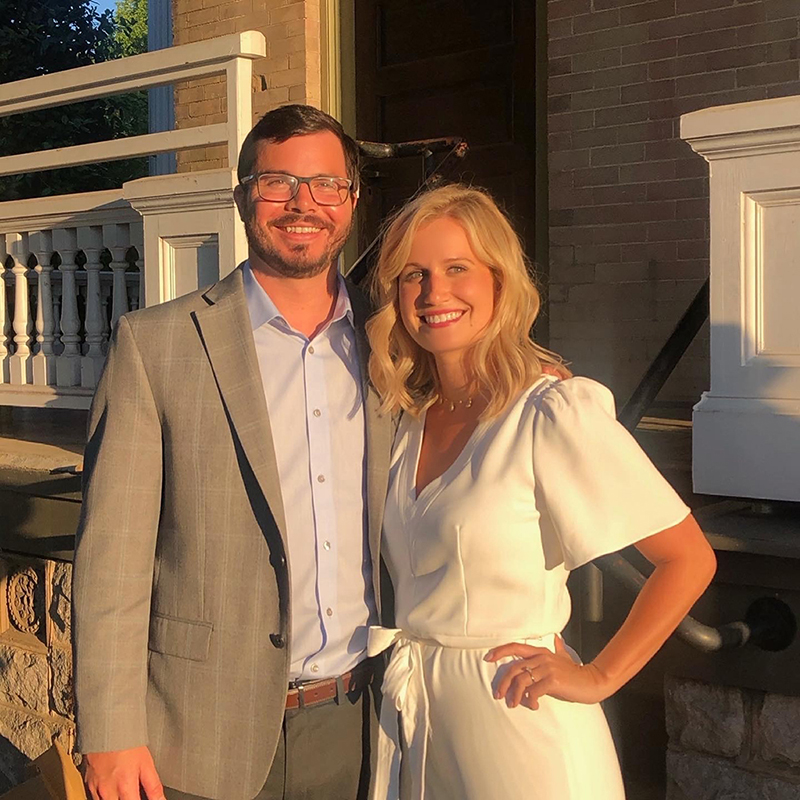Our Health and Our Environment Are Intertwined
Posted on by
Meet Kelsey Benson. She works at the Agency for Toxic Substances and Disease Registry (ATSDR) in the Office of Community Health and Hazard Assessment.
“Our health and our environment are intertwined. I’m an environmental epidemiologist, and I believe that environmental epidemiology impacts such a large group of people. And it is one of the most important tools we have currently to be used in environmental management decision making,” says Kelsey.
Born and raised in Georgia, right outside of Atlanta, Kelsey shared that she always “had a passion for anything science.” As a child, she collected bugs and entered science fairs, knowing at an early age that her career path would have something to do with science.
After graduating from Georgia College and State University in 2013 with a degree in Environmental Science, Kelsey researched her grandfather, Jack Benson, now deceased. She found that he worked for the Centers for Disease Control and Prevention (CDC) in Atlanta for over thirty years, mostly on immunization, and was a member of the CDC Foundation. He also served in the Public Health Service as a Commissioned Corp Officer. Recalling how passionate he was about his work, Kelsey was inspired to get a Master of Public Health (MPH) in Epidemiology, which she received from the University of Georgia (UGA) in 2015.
Path to public health and current work
While at UGA, Kelsey worked part time with one of her professors on cancer epidemiology projects as part of a student internship program. Through this program, she secured an internship with ATSDR, working on a vapor intrusion database. Collaborating with ATSDR scientists and reading many of their published documents like public health assessments and exposure investigations, she enjoyed the atmosphere at ATSDR and started to see the value of the agency to the public.
After the student internship, Kelsey emailed multiple ATSDR staff seeking a more permanent position. She was successful in landing an ORISE fellowship in the former Division of Toxicology and Human Health Sciences, now called the Office of Community Health and Hazard Assessment, where she has worked for the past six years, most recently as a full time epidemiologist
Kelsey currently works on several health studies, including a synthetic turf study, and the cancer cluster and regional activity tracker (CCARAT) project. More recently, she has taken an interest in spatial and cancer epidemiology, emergency preparedness and response, and the Comprehensive Disaster Assessment and Readiness Tool (CDART) project.
With the CDART project, Kelsey and her colleagues were able to assist the Puerto Rico Department of Health and Department of Family in creating a suite of preparedness and assessment tools for disasters like hurricanes and earthquakes.
Most rewarding aspects of the job
Kelsey appreciates the diversity and challenges afforded her in her current position, something she shared that her management both supports and encourages. “I feel very blessed to be able to do work that I love and collaborate with so many outstanding scientists. Collaboration in general is something I enjoy with colleagues within ATSDR and CDC, and state, and local public health partners.”
With gracious respect to the older generation of scientists in her field, Kelsey added, “As a newer epidemiologist, I think that many of our partners are brilliant and have a wealth of knowledge. I ask as many questions and absorb as much of their knowledge as I can.”
Most passionate about
Asked what gets her out of bed in the morning and propels her to work, Kelsey has a very relatable response: “Coffee!”
After coffee, Kelsey is passionate about the environment and epidemiology in general. Epidemiology is the branch of health science which deals with the incidence, distribution, and possible control of diseases and other factors relating to health. As an environmental epidemiologist, Kelsey and her colleagues focus on environmental factors relating to health.
Kelsey is also excited about advances in technology that have made projects she has collaborated on much easier, for example, Geospatial Research, Analysis, and Services Program (GRASP) and electronic survey tools that make data collection easier for studies. GRASP provides leadership, expertise, and education in the application of geography, geospatial science, and geographic information systems (GIS) to public health research and practice.
Affect on public health
“At ATSDR, helping and protecting communities is our primary goal, and we are accomplishing that by conducting research, collaborating with public health partners, and providing educational outreach. The public is concerned about cancer, and we know this. We have a duty to address those concerns,” says Kelsey.
ATSDR uses standardized systems to track possible links between cancer clusters and environmental chemical exposure, providing insight into future work and research to find more definitive links.

Hobbies and interests
Recently married on May 8, 2021, Kelsey enjoys camping and hiking with her husband, Kenny, and their hound dog, Bubby. Prior to the pandemic, the couple enjoyed backpacking through Costa Rica together, and Kelsey has always enjoyed hiking trips close to home, especially during the past year of COVID. Now, a personal goal of theirs is to visit every national park in the country.
Kelsey is an avid reader, enjoys dabbling in acrylic and oil painting, and would love to have an art studio in her home one day.
Healthy future, healthy environment
Kelsey is excited not only about advances in environmental health, new analytical tools, electronic survey tools, but also about using spatial epidemiology.
Closely related to health geography, spatial epidemiology is a subfield of epidemiology focused on the study of the spatial (of or relating to space) distribution of health outcomes. Specifically, spatial epidemiology is concerned with the description and examination of disease and its geographic variations.
“I look forward to continuing my career at ATSDR. Environmental epidemiology is very diverse, multidisciplinary, and always fun,” Kelsey says.
She is also hopeful that ATSDR will “continue to grow and evolve as an agency,” continuing to meet the environmental public health needs of communities, since “our health and our environment are intertwined. We should never forget that we are here to serve them,” says Kelsey — community public health and the environment both.
Twitter Text : “Our health and our environment are intertwined.” Meet Kelsey Benson, an environmental epidemiologist who works at the Agency for Toxic Substances and Disease Registry (ATSDR) in the Office of Community Health and Hazard Assessment https://bit.ly/3xBwgy2 #CDCEHblog via @CDCEnvironment.


Post a Comment